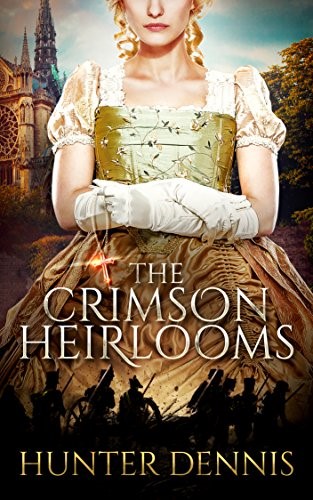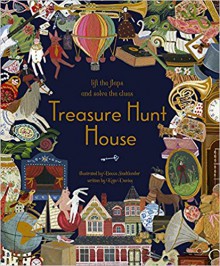

This historical fiction reads more like a book written in the 19th Century than one written in our time, which says something for the quality of the Dennis’s creativeness. One must qualify that by pointing out that there is a great deal of modern rather than 19th Century word usage and sentence structure, but for the modern reader that simply sharpens understanding, rather than detracting from the historic placement. Time shifting word patterns have often give even the greatest literature from past centuries a turgid heaviness. So I think the author was right to not too deeply play his use of 19th century ‘building materials’.
As one is absorbed in the series of period specific vignettes, which make up the book, the descriptive detail effortlessly levers imagination back through time. I would find it hard to believe that Dennis hasn’t read a great many of the classic fictions from the period, allowing his writing to absorb something of those famous authors tones. The modern reader needs to be warned that this book also has a slow rhythm, is very long descriptive detail and has a primary plot that is almost an irrelevance. What Davis does do with a certain brilliance is draw us to the ‘atmospheres’, the social drama, the real histories, of the 18th and 19th centuries.
My strongest criticism is firstly that the book is overlong, being at least two good-sized reads in one, and that, secondly, I see no value in flicking backwards and forwards in time. The later confused me, causing a struggle to put together the jigsaw of characters and events. I am, I’m sure, hampered by being a particularly slow reader, so necessitating many periods of reading interwoven with the demands of my real world. Particularly with my memory being far short of excellent, I was too often left half drowned. The book is far too long for all but a few to read at one or even two concentrated sittings. I would love to see this book re-engineered into a simple linear chronology.
Overall, it would be most ingenuous of me not to give this book five of those ridiculous stars. However, I feel this reads more like a work in progress than a finished article. This is the first part of a series, but that doesn’t mean that this volume is correctly ended in adagio rather than climatic allegro. The read finishes with an intellectual plot resolution of sorts, but with none of the fortissimo that some earlier episodes in the book achieved. In short, a wonderful read that is somewhat spoiled by a lack of input from a good content editor.

I meet a couple of friends once a week for coffee/chai/chocolate and today one of them said "want to go to the bookstore afterwards?"
...
I assumed it was a rhetorical question. Anyway, this friend has 2 small kids so we of course gravitated to the kids section, where she bought nothing, and I bought this book.
For myself.
It has flaps.
It has clues.
It has riddles.
Did I mention it had flaps? Flaps are almost as good as pop-ups!
The book is beautiful, with a gorgeous spread and multiple flaps for each room of a house owned by an obviously very wealthy Great Aunt Martha. Behind each flap is a little fact about the object on the flap and they cover a multitude of subjects: art, music, inventions, history, and fashion.
Each spread also contains a clue to one of the flaps - this was, unfortunately, the most disappointing aspect of the book as the clues seemed easy to the point of insulting. Yes, yes, this is supposed to be a kids book, so the clues reflect that, I know. But the clues' simplicity seem disproportionate to the relative maturity of the facts the other flaps contain. There are a few concepts (like BC and AD, or royal executions as examples) that imply a higher level of education than clues that consist of "Stop Press! Read all about it! The answer is here in black and white!", which is easy enough that I don't even have to tell you the answer. Although perhaps in this digital age I'm giving kids too much credit.
Regardless, the facts were great but the clues too easy. But the book is lovely and I can't wait to show it to my nieces.
Why would grown men in the Chinese government feel threatened by Peppa Pig?
If anyone say the Chinese government is fine, don't believe this person. How could a government be fine while feeling threatened by children books about pink pigs.

Despite this book being the progenitor of pretty much all of the pirate books of the 20th Century, as well as being an influence of many of the adventure and 'boys' books that came afterwards, I found this book rather dull. Maybe it has a lot to do with my lack of enthusiasm for 19th Century English novels (which does not include [author:Jules Verne], since he is French). In fact, I can't really think of any 19th Century English novels that I would actually jump up and say 'this is brilliant'. Personally, I really don't know what it is that makes me find much of the literature of the 19th Century boring, but generally I do (though I probably should make a note of the fact that Stevenson is actually a Scot).
Anyway, this is a story of a boy, Jim Hawkins, who stumbles across a treasure map and then goes and shows it to a mutual acquaintance, Dr Liversey. Together they hire a crew and go and look for the treasure on Treasure Island. However, while they are hiring a crew, they bring on board a cook, Long John Silver, who then goes and hires the rest of the crew. As it turns out, Long John was the cook on the ship of Captain Flint, the pirate who buried the treasure originally, and the crew he hires were all pirates on that same vessel. So, when they arrive at Treasure Island, Long John and his men take over the ship, and those still loyal to Hawkins and Liversey, manage to escape. However, to cut a long story short (not that Treasure Island is really all that long), they outsmart the pirates, get the treasure, and all return to England happy men.
Now, this was Stevenson's first novel, he wrote travel narratives before that, but this book was his first foray into the realm of the imagination. Further, his adventure into this realm pretty much changed the scene of the novel ever since, and many of the 'boys books' of the 20th Century can all look back to Stevenson for inspiration. It is not that Stevenson wrote the first adventure novel. Such stories have been floating around for eons. What Stevenson did is that he constructed it so that that appealed to the modern reader. Not only is it supposed to be exciting (I didn't find it all that exciting) but it was also short and easy to read. It is aimed at a young audience, though many adults have read and come to appreciate it (me not being among them).
Now, the best character in the book by far is Long John Silver. I always expected him to be a pirate captain, but he is much more sneakier than that. The fact that he escapes at the end of the book goes a long way to show this character's shrewdness. However, he also has a sense of morality (one which almost gets him killed). When he had captured Hawkins, the other pirates wanted to kill him, but Silver intervenes (and in the process almost gets himself killed). Silver, while being the man with the plan, demonstrates that it is not easy to take charge of a gang of pirates. He planned on taking over the ship, but the pirates ended up jumping the gun, as they do most of the way through the book, which in the end sows the seeds of their failure.
However, the character that I found the most out of place would have been Jim Hawkins. He is a seven year old boy who is looking after his sick mother after his father dies, and he simply runs off on an adventure to find a lost treasure. Granted, one could argue that he went off after the treasure to support his mother, but considering the time it takes to travel, and the fact that the adventure would take at least a year, if he is lucky, then it really makes no sense. However, this is a 'boys' book which means that the character is one way to appeal to boys.
The other interesting thing is to notice all of the pirate jargon and paraphernalia in this book. Phrases such as 'pieces of eight' and 'shiver me timbers' as well as the Jolly Roger, all find their birthplace in this book. While I may consider the book, and the story, somewhat dull, one cannot help but admire the influence that Stevenson's writing has had upon the literary world.